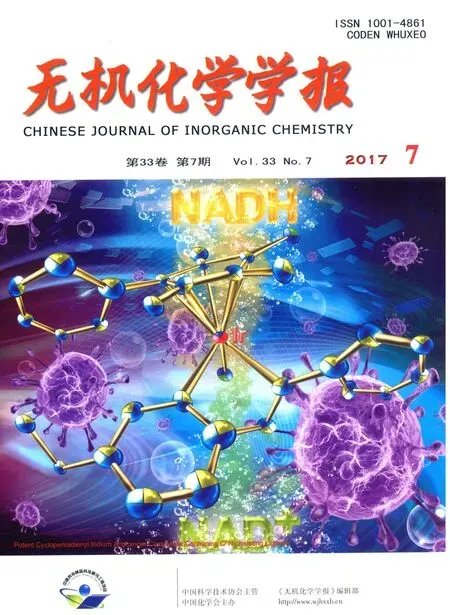一种由1,4,7-三氮杂环壬烷形成的三脚架配体及其与高氯酸钠组装的含[Na4(ClO4)4]四面体晶体结构
李秀敏 杨雨 张宗尧 曹睿
(中国人民大学化学系,北京100872)
一种由1,4,7-三氮杂环壬烷形成的三脚架配体及其与高氯酸钠组装的含[Na4(ClO4)4]四面体晶体结构
李秀敏 杨雨 张宗尧*曹睿
(中国人民大学化学系,北京100872)
合成了一种多齿的三脚架配体:三(2-(4,7-二甲磺酸基-1,4,7-三氮杂环壬烷基)甲基苄基)胺,即N(CH2-o-C6H4-CH2-tacnTs2)3(L),其中Ts=tosyl。它包含3个1,4,7-三氮杂环壬烷连接在三苄基胺的邻位。该配体在高氯酸钠存在情况下结晶,自组装得到4个钠离子形成的四面体结构晶体:[Na4(L)(CH3CN)(ClO4)4(H2O)3]n。该晶体结构用X射线单晶衍射、粉末衍射、红外光谱和热重分析表征,并用紫外吸收和荧光对其光学性质进行表征。
晶体结构;三脚架配体;四面体;二维框架;三氮杂环壬烷基
0 Introduction
Self-assembled coordination polymers have gained much attention due to their structural diversities, intriguing properties and applications in various fields. Coordination polymers reported so far presentmainly polymeric structures with single metals or small building blocks[1-6].In order to make coordination polymers with more structural diversities,efforts have been made in ligand design,for example by introducing multi-dentate chelating groups to stabilize large high-nuclearity metal clusters as building blocks[7-9]. Transition metal elements have been mainly used[10-14], whilemain group metal elements are less well-studiedbecause of their unpredictable coordination numbers owing to the lack of ligand field stabilization effect.
Tripodal ligands based on the tris(xylyl)amine backbone have been investigated,forming either convergent trinuclear metal complexes or divergent coordination complexes[15-16].When three dipicolylamine units were attached to the tris(xylyl)amine scaffold,a tripodal ligand N(CH2-o-C6H4-CH2N(CH2Py)2)3(Py= pyridine)was formed.This ligand was used to synthesize and stabilize complexes containingμ3-oxoanion as reported by Lippard and co-workers[17-18].Subsequently the tripodal ligand N(CH2-o-C6H4-CH2N(CH2Py)2)3was reported in the synthesis of a trinuclear zinc complex for carbon dioxide fixation[19].Most recently,a tripodal tris-tacn ligand,N(CH2-m-C6H4-CH2tacn)3was reported to form a nano-sized coordination cage with 30 Niions[20].
Herein,we report a multidentate tripodal ligand, N(CH2-o-C6H4-CH2tacnTs2)3(L),and its ability to assemble a[Na4(ClO4)4]tetrahedron cluster.The stabilized [Na4(ClO4)4]tetrahedron cluster is rarely reported in the literature.Ligand L has been fully characterized by1H and13C NMR,mass spectroscopy and elemental analysis.The resulted complex 1,[Na4(C84H102N10O12S6) (CH3CN)(ClO4)4(H2O)3]nhas been thoroughly characterized by single crystal X-ray diffraction,powder X-ray diffraction,infrared spectroscopy and thermogravimetric analysis.UV-visible absorption spectrum and fluorescence spectrum were measured to characterize its optical properties.
1 Experimental
1.1 M aterials and generalmethods
Manipulations of air-and moisture-sensitive materials were performed under an atmosphere of nitrogen gas using standard Schlenk line techniques. All reagents were purchased from commercial suppliers and used as received unless otherwise noted. Dry solvents,including acetonitrile,and dichloromethane,were purified by passage through activated alumina.The compounds N(CH2-o-C6H4-CHO)3and tacnTs2were synthesized according to methods reported previously[14].1H and13C NMR measurements weremade on a Bruker spectrometer operating at 400 MHz.MALDI-TOF mass spectra was acquired on a Bruker Daltonics Inc.BIFLEXⅢmatrix-assisted laser desorption/ionization time of flightmass spectrometer. Powder X-ray diffraction was made using X-ray diffractometer(Shimadzu,XRD-7000)with Cu Kαas X-ray radiation(λ=0.154 18 nm,U=40 kV,I=30 mA, 2θ=5°~50°).Thermogravimetric datawere collected on a TA Q50 analyzer in nitrogen at heating rate of 10℃·min-1.The infrared spectra(2%sample in KBrpellet) was recorded on a Bruker spectrophotometer(OPUS software).UV-visible absorption spectra were recorded on a Hitachi U-3900H absorption spectrophotometer at room temperature in thin dichloromethane solution. Fluorescence spectra were measured on a Hitachi F-4600 fluorescence spectrophotometer at room temperature.
1.2 Synthesis of N(CH2-o-C6H4-CH2tacnTs2)3
Compound N(CH2-o-C6H4-CHO)3(370.0 mg,0.1 mmol)was dissolved in dichloromethane(5 mL),to which tacnTs2(131.0 mg,0.3 mmol)and NaBH(OAc)3(101.0 mg,0.48 mmol)were added.The reaction mixture was stirred 24 h under Ar and then was neutralised with saturated NaHCO3solution.The organic phase was separated and the aqueous phase was further extracted with dichloromethane(20 mL), The resulting crude reaction mixture was dried and purified by preparative chromatography(Vethylacetate/ Vhexane=1∶1)affording a pure pink solid(42 mg,Yield: 86%).1H NMR(400 MHz,CDCl3):δ2.39(s,18H), 2.65(s,12H),2.95(s,12H),3.36(s,12H),3.45(s, 6H),3.56(s,6H),7.10~7.50(m,24H),7.60(d,12H).13C NMR(100 MHz,CDCl3):δ21.73,51.73,52.57, 54.81,56.23,57.27,126.79,127.43,129.95,130.00, 130.41,131.55,135.50,138.03,139.07,143.52. Anal.Calcd.for C84H102N10O12S6(%):C,61.66;H,6.28; N,8.56.Found(%):C,61.89;H,6.41;N,8.78.MALDI -TOF-MS for[M+Na]+:Calcd.1 657.6;Found,1 657.6
1.3 Synthesis of complex 1
Ligand N(CH2-o-C6H4-CH2tacnTs2)3(16 mg,0.01 mmol)was dissolved in acetonitrile(3 mL).To this solution,NaClO4(5.6mg,0.04mmol)dissolved inwater (2 mL)was then added.The colorless solution wasstirred overnightandwas then filtered.Slow evaporation of the filtration afforded colourless prismatic crystals of complex 1(10.6 mg,Yield:42.7%),which were suitable for single crystal X-ray diffraction analysis. Anal.Calcd.for C86H111Cl4N11Na4O31S6(%):C,46.51;H, 5.04;N,6.94.Found(%):C,46.26;H,5.00;N,6.49.
1.4 Crystal structure determ ination
Colorless block single crystal sample of complex 1,with dimensions of 0.10 mm×0.12 mm×0.18 mm suitable for X-ray analysiswas coated with Paratone-N oil,suspended in a small fiber loop,and placed in a cold gaseous nitrogen stream on a Bruker D8 VENTURE X-ray diffractometer performingφ-andωscansat100(2)K.Diffraction intensitiesweremeasured using graphite monochromated Mo Kαradiation(λ= 0.071 073 nm).Data collection,indexing,initial cell refinements,frame integration,and final cell refinements were accomplished using the program APEX2. Data reduction and empirical absorption correction were performed using the SAINT and SADABS program[21].The structures were solved by the direct method using SHELXS[22]and refined by full-matrix least squares on F2using SHELXL[23].Crystal data, data collection and structure refinement details were summarized in Table 1.The C-bound H atoms were placed in calculated positions and treated using a riding-model approximation,with C-H 0.093 nm and C-H 0.097 nm formethylene H atoms and O-H 0.085 nm for coordinated water H atoms,and refined as riding,with Uiso(H)=1.2Ueq(C,O).
CCDC:1547366.

Table 1 Crystal data and structure parameters for the com plex 1
2 Results and discussion
2.1 Crystal structure description
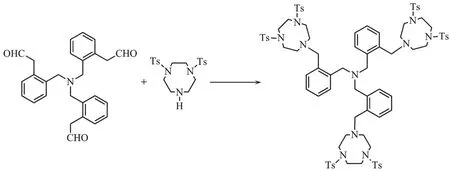
Fig.1 Synthesis of ligand L
Ligand L was synthesized according to the reaction depicted in Fig.1.Its identity and purity were confirmed by1H and13C NMR measurements.In the presence of NaClO4,crystal growth of L gave complex 1,which crystallizes in the trigonal space group R3. The asymmetric unit contains one third of the ligand L,one Na and one perchlorate anion.Ball-and-stick structural representation of the whole complex is shown in Fig.2.There are four Na atoms forming a tetrahedron.The Na4tetrahedron is located in the shell cavity of the ligand,and the coordinationenvironment of Na cores is shown in Fig.3.Owing to the C3-axis,three basal Na atoms lie on an equilateral triangle planewith Na…Na distance of 0.543 3(3)nm. The distance between the apical Na and the basal Na is 0.491 9(2)nm.The dihedral angle between lateral face and base is 67.510(27)°.The apical Na2 is seven-coordinated with three symmetrical equivalent O6 and three symmetrical equivalent O8 from the perchlorate,namely O6,O6i,O6ii,O8,O8iand O8ii, (Symmetry codes:i-y,x-y,z;iiy-x,-x,z)and a N atom from solvent acetonitrile.The basal Na1 is also seven-coordinated with two O atoms from the previous perchlorate moiety,two atoms from the disordered basal perchlorate,two O atoms from the tosyl group and one O atom from solventwatermolecule.
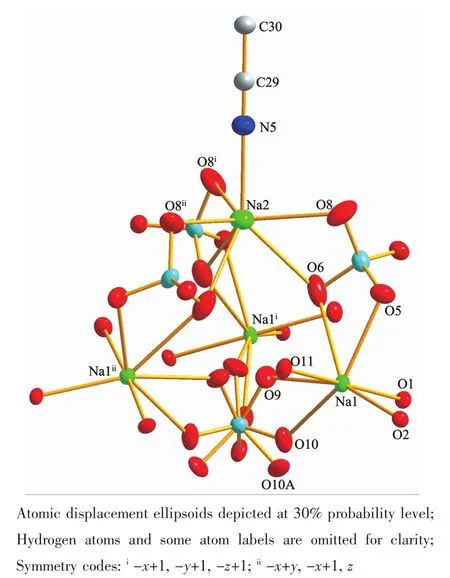
Fig.2 Atom labelling scheme showing the coordination environment for the Na+cations of complex 1
The charge is balanced by four ClO4-counter anions,which connect the Na cores.There is one ClO4-located below the plane created by three symmetrical equivalent Na1,with C3-axis passing through is rotationally disordered.For atom O10,the free variable refinements give the occupancy of 0.7 at the site of O10,and the occupancy of 0.3 at the site of O10A.However,atom O9 should lie on the special position that C3-axis is passing through.The rotational disorder makes it difficult to fix O9 on that location. Therefore,O9 is refined with an occupancy of 0.33, and after symmetry operations,the occupancy of the O9 atom and the chemical composition is correct.The other three perchlorate ionsare symmetricalequivalent. Each of those perchlorate ions combines an apical Na atom and a basal Na atom,with O6 bridging them directly with Na-O bond distances of 0.275 0(4)nm and 0.265 3(4)nm,which consists the Na4tetrahedron cluster structure shown in Fig.2.These Na4clusters are jointly connected by Na-O bonds.As mentioned above,each basal Na atom is coordinated by two tosyl O atoms,with three symmetrical O1 from one ligand molecule and three O2 from three separate ligand molecules.Though there are not any direct bridging atom,the tosyl group bridges the two Na4clusters. Through those interactions,the 2D framework is built up.The structure is further stabilized by hydrogen bonds.Water atom O11 is a donor to atom O3i, respectively(Table 2).
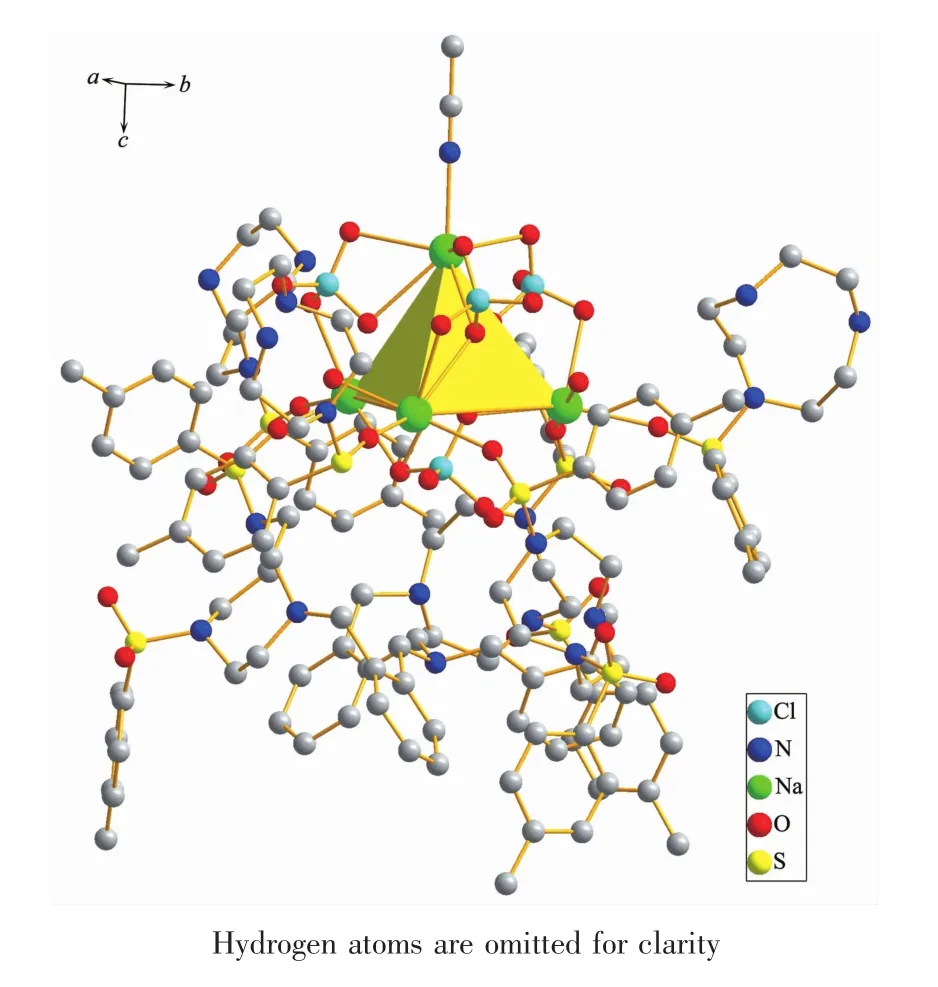
Fig.3 Extended structure of complex 1 drawn in balland-stick mode
2.2 PXRD,IR and optical properties
Powder X-ray diffraction analysis is also applied to further analyze the bulky sample.As is shown in Fig.4,the experimental powder peaks fit the simulatedpowder patterns from the single crystal data very well. In addition,infrared spectrum is also used to analyze the complex,confirming very strong characteristic absorption peaks of perchlorate ions at 1 067 cm-1(Fig.5)[24].Optical properties of the complex 1 have been studied at room temperature.The UV-visible absorption spectrum of complex 1 in dichloromethane shows intense absorption eventswith peaks at 210 and 230 nm(Fig.6).It can be attributed to the n-σ*and π-π*electronic transition of the ligand.The excitation spectrum of complex 1 exhibits a broad band from 230 to~320 nm with the strongest peak at 280 nm.The emission spectrum hasλem,max=335 nm (Fig.7),which might be attributed to the inter ligand charge transfer.

Table 2 Hydrogen-bond geometry for com plex 1
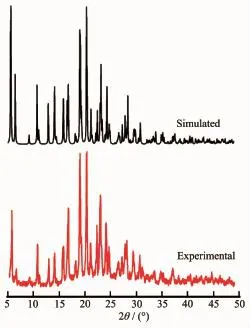
Fig.4 PXRD pattern of complex 1
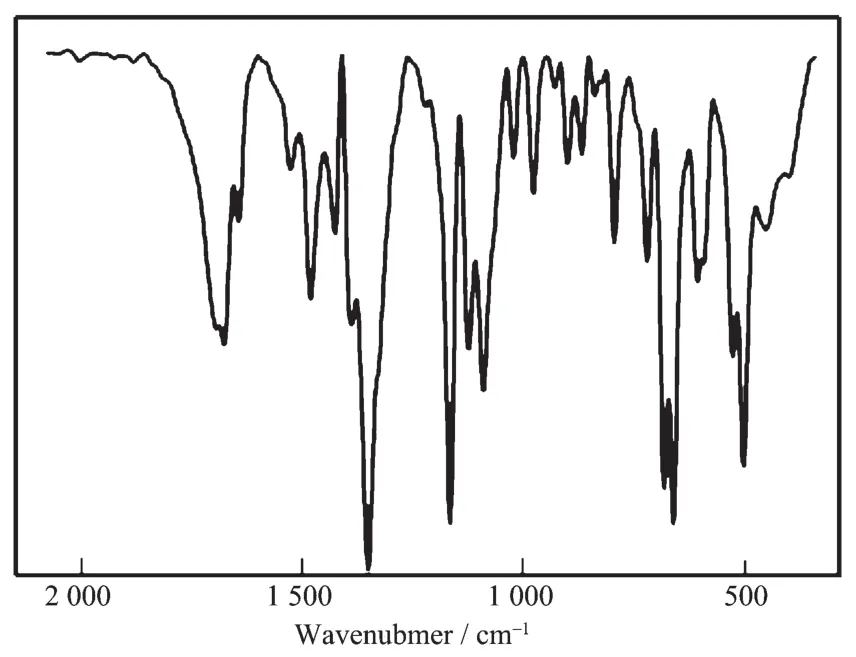
Fig.5 FTIR spectrum of complex 1
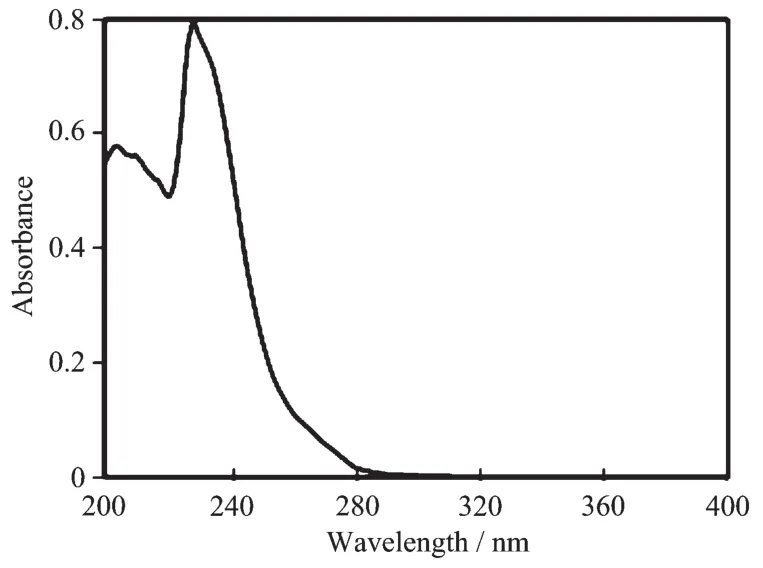
Fig.6 UV-visible absorption spectrum of complex 1 in dichloromethane at room temperature
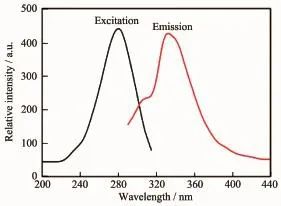
Fig.7 Excitation and emission spectra of complex 1 in dichloromethane at room temperature
2.3 Thermal analysis
Furthermore,elementary analysis is applied using bulk crystalline samples.However,the percentage of N is slightly lower than expected.We suspect that the bound MeCN molecule is readily dissociated. Therefore,thermal gravimetric analyses(TGA)were performed from 20 to 800℃(Fig.8).The firstweight loss of 4.96%is in the range from 54 to 213℃, corresponding to the removal of three coordinated water molecule and one coordinated MeCN molecule (Calcd.4.31%).This phenomenon is in consistentwith the results of elemental analysis.Upon further heating, an obvious weight loss occurs in the temperaturerange of 210~370℃,corresponding to the release of ligands.After 370℃,no weight loss is observed, indicating the complete decomposition of complex 1.
3 Conclusions
In conclusion,a multidentate tripodal ligand L N(CH2-o-C6H4-CH2-tacnTs2)3was synthesized and was used to stabilize a[Na4(ClO4)4]tetrahedron cluster.This tripodal tris-tacn complex has been characterized by single crystal X-ray diffraction,powder X-ray diffraction,infrared spectroscopy and thermogravimetric analysis.UV-visible absorption spectrum and fluorescence spectrum were measured to characterize its optical properties.Such a[Na4(ClO4)4]tetrahedron cluster is rarely reported in the literature.This work highlights the value of tripodal ligands derived from tris(xylyl)amine backbone in assemblingmetal clusters with C3symmetry.
[1]Perry IV J J,Perman JA,Zaworotko M J.Chem.Soc.Rev., 2009,38:1400-1417
[2]Qin L,Ju ZM,Wang Z J,et al.Cryst.Growth Des.,2014, 14:2742-2746
[3]Jalil A,Clymer R N,Hamilton C R.Acta Crystallogr.Sect. C,2017,C73:2053-2296
[4]Jin F,Zhang Y,Wang H Z,etal.Cryst.Growth Des.,2013, 13:1978-1987
[5]Zacher D,Shekhah O,Fischer R.A,et al.Chem.Soc.Rev., 2009,38:1418-1429
[6]Hensen K,Lemke A,Stumpf T.Inorg.Chem.,1999,38:4700 -4704
[7]Ng H N,Calvo C,Idler K L.J.Solid State Chem.,1979,27: 357-366
[8]Argent S P,Tarassova I,Greenaway A,et al.Polyhedron, 2016,120:18-29
[9]Larocque T G,Badaj A C,Dastgir S,et al.Dalton Trans., 2011,40:12705-12712
[10]Brown M D,Levason,W,Reid G,et al.Polyhedron,2005, 24:75-87
[11]ZhangW S,Gong JG,Zhang L L,etal.Dalton Trans.,2013, 42:1760-1769
[12]ZHANG Feng(张凤),LIU Guang-Xiang(刘光祥).Chinese J. Inorg.Chem.(无机化学学报),2016,32:683-690
[13]Prier C K,Rankic D A,MacMillan D W C.Chem.Rev., 2013,113:5322-5363
[14]Lewis E A,Tolman W B.Chem.Rev.,2004,104:1047-1076
[15]Su C Y,Cai Y P,Chen C L,etal.J.Am.Chem.Soc.,2003, 125:8595-8613
[16]Brechin E K.Chem.Commun.,2005,41:5141-5153
[17]Cao R,McCarthy B D,Lippard S J.Inorg.Chem.,2011,50: 9499-9507
[18]Cao R,Müller P,Lippard S J.J.Am.Chem.Soc.,2010, 132:17366-17369
[19]Liu X,Du PW,Cao R.Nat.Commun.,2013,4:2375-2382
[20]Zhang ZY,Zheng K Y,Xia T L,et al.Chem.Eur.J.,2016, 22:17576-17580
[21]Sheldrick G M.SADABS,Program for Empirical Absorption Correction of Area Detector Data,University of Göttingen, Germany,2008.
[22]Sheldrick G M.Acta.Crystallogr.Sect.A,1990,A46:467-473
[23]Sheldrick GM.Acta.Crystallogr.Sect.A,2008,A64:112-122
[24]Nakamoto K.Infrared and Raman Spectra of Inorganic and Coordination Compounds.5th Ed.New York:Wiley&Sons, 1997:96
A Tripodal Tris-tacn(tacn=1,4,7-Triazacyclononane)Ligand and Its Ability to Assemble a[Na4(ClO4)4]Tetrahedron Cluster
LIXiu-Min YANG Yu ZHANG Zong-Yao*CAO Rui
(Departmentof Chemistry,Renmin University of China,Beijing 100872,China)
A multidentate tripodal ligand,tris(2-((4,7-ditosyl-1,4,7-triazonan-1-yl)methyl)benzyl)amine,namely N (CH2-o-C6H4-CH2-tacnTs2)3(L,Ts=tosyl),which contains three triazacyclononane arms linked to the ortho positions ofa tris(xylyl)amine scaffold,was synthesized.Itstabilizesa[Na4(ClO4)4]tetrahedron cluster,which is rarely reported in the literature.The resulted complex has the formula of[Na4(C84H102N10O12S6)(CH3CN)(ClO4)4(H2O)3]n.This tripodal tris-tacn complex has been characterized by single crystal X-ray diffraction,powder X-ray diffraction,infrared spectroscopy and thermal thermogravimetric analysis.UV-visible absorption spectrum and fluorescence spectrum weremeasured to characterize the optical properties of the complex.CCDC:1547366.
crystal structure;tripodal ligand;tetrahedron cluster;two-dimensional framework;tacn
O614.112
A
1001-4861(2017)07-1299-06
10.11862/CJIC.2017.144
2017-03-17。收修改稿日期:2017-05-03。
中国人民大学科学研究基金(中央高校基本科研业务费专项资金资助)资助项目。*
。E-mail:zhangzongyaochem@ruc.edu.cn

